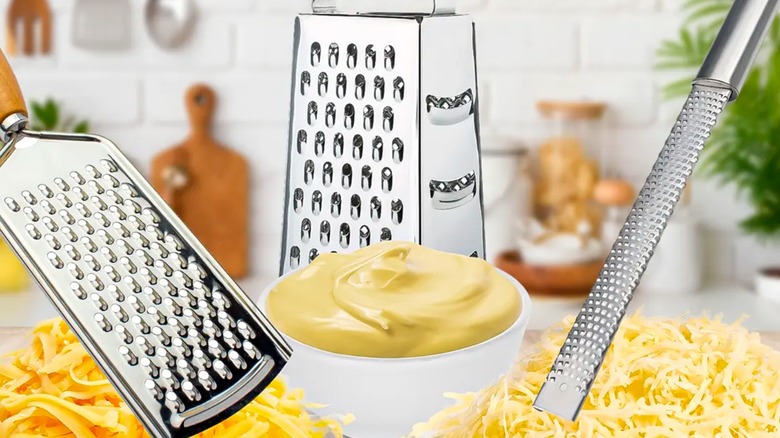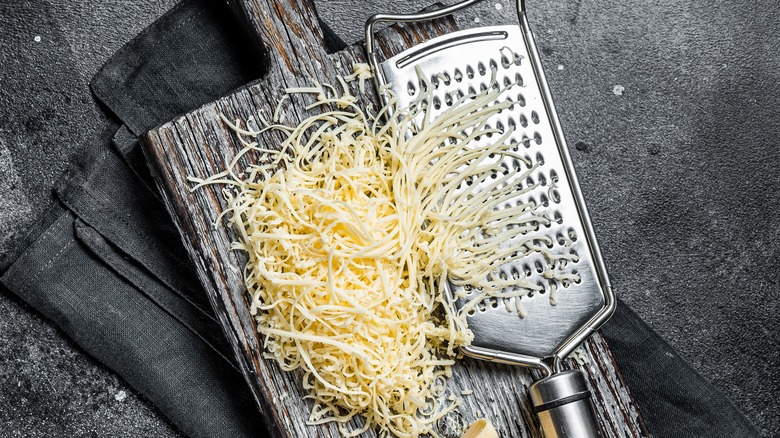The Type Of Cheese Grater You Use Can Seriously Impact Your Sauce's Flavor
Grating your own cheese at home can be, well, grating. After toiling away, the cheese just gets stuck in the teeth, and you'd love to scoop it out, but your hands are all cut up from your grapple with the grater. Suddenly, that $4 bag of pre-shredded cheese from the grocery store (which you scowled at just days earlier) isn't looking so outrageous after all.
Are you using a microplane for the job? Or a box grater? Who cares ... right? Melt the cheeses and the differences between the box grater vs. microplane become tougher to notice. But, the difference we're concerned about here isn't texture. It's flavor.
Box graters are the classic cheese grater that probably first comes to mind, with rows of sharp star-shaped teeth, like a bunch of little mouths telling you how hungry they are for dinner. Microplanes are typically used for shaving chocolate into miniature curls or scraping the zest off of a lemon. The tool is wand-like and aerodynamic, making it easy to maneuver and wield to your whims, and effortlessly shaving fluffy tufts of cheese off the block. This can be especially helpful when trying to shave harder cheeses like Parmigiano Reggiano. Plus, those little dreaded cheese curls don't get stuck in the teeth as badly as with the fine side of a box grater. So, which tool is better for creating a good cheese sauce? The short answer is: It depends on your preference. But it does make a difference.
Box graters create richer flavor than microplanes
If your cheese shavings are denser, you're more likely to subconsciously add more of them to your sauce. In other words, that pinch of shredded cheese that you eyeball could mean two very different things depending on the weight of the cheese and how it appears to you when grated. Using denser, less airy, box-grated cheese, therefore, makes for a richer, more savory cheese sauce, while sauces made with fluffier microplaned cheese might have a less strong flavor and a thinner mouthfeel. Still, whether richness is automatically considered better remains the opinion of the individual foodie. Some folks prefer a lighter sauce or grating over their pasta.
With vegetables, different cuts create different physical forms. Slicing versus dicing versus julienning affects how quickly or slowly a vegetable softens, its texture, and the potency of its natural flavor per bite. In a similar vein, Anthony Bourdain once famously criticized cooks who don't take the time to peel and chop fresh garlic, instead opting for jarred pre-minced garlic (aka "jarred spew rotting in oil"), which the chef and writer viewed as a far inferior form of the same ingredient.
While cheese admittedly isn't packed with the same cut-specific enzymes as produce, many of the same principles still apply, and your go-to grater could be affecting the flavor of your cheese sauce or plate of pasta more than you think.

